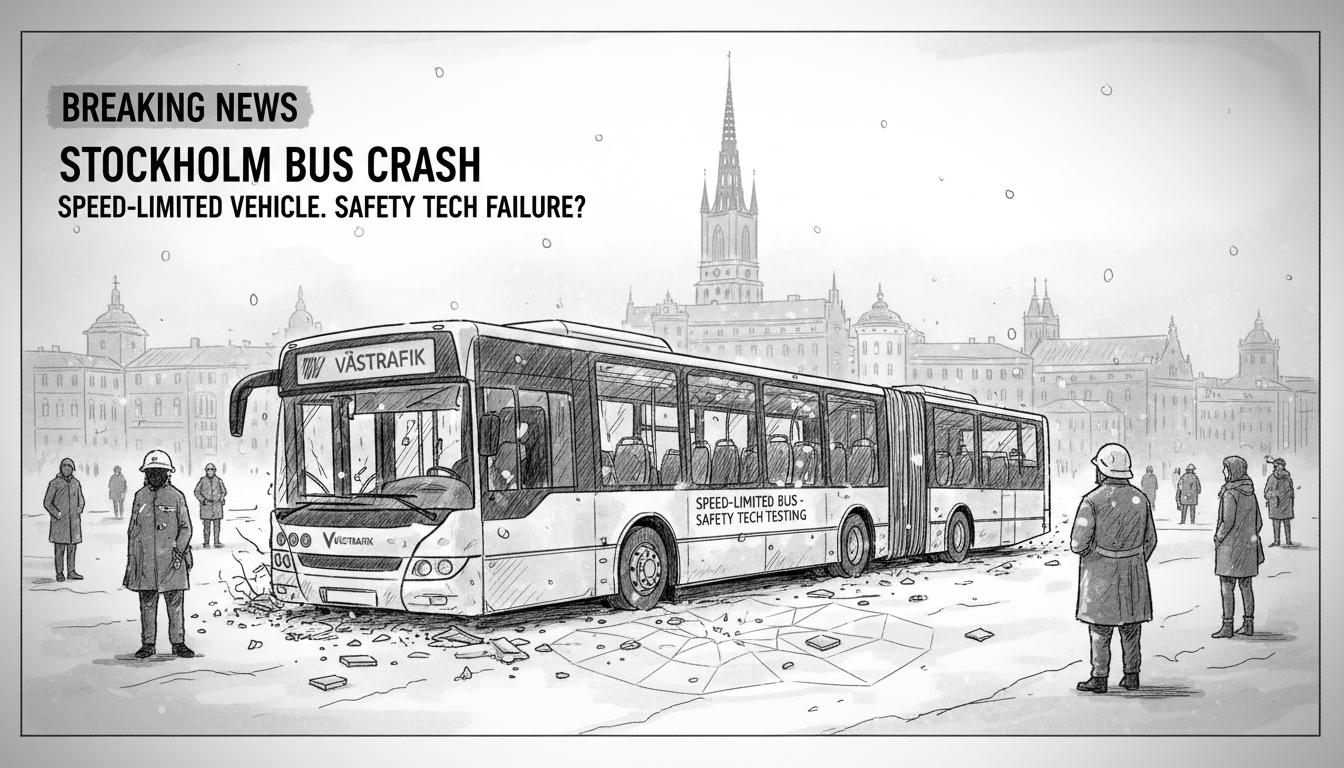A fatal bus accident in Stockholm last Friday involved a vehicle equipped with digital speed restriction technology. The bus struck a bus shelter, resulting in three deaths. At the time of the incident, the bus was limited to a maximum speed of 20 kilometers per hour through geofencing technology.
Geofencing creates virtual boundaries that can automatically restrict vehicle speeds in designated areas. This technology represents a growing trend in public transportation safety systems across Nordic countries. Västtrafik, the public transport authority responsible for the bus, confirmed they are testing this technology but emphasized they do not currently use it in their operational fleet.
The safety implications of this incident raise important questions about automated vehicle controls. Joakim Holt, Västtrafik's safety chief, made a stark assessment of the situation. He stated that if the system cannot be trusted, then the organization has failed in its safety responsibilities.
This tragedy occurs amid increasing adoption of digital safety systems in Swedish public transport. Sweden has been at the forefront of implementing advanced safety technologies across its transportation networks. The country's Vision Zero policy, aiming to eliminate traffic fatalities and serious injuries, has driven innovation in vehicle safety systems.
Public transportation authorities throughout the Nordic region have been investing heavily in digital safety solutions. These systems typically include speed governors, collision avoidance technology, and geofencing applications. The goal is to create safer urban transport environments, particularly in densely populated areas.
The investigation into the Stockholm bus crash will likely examine multiple factors. Authorities will need to determine whether the speed restriction system functioned as intended. They must also assess whether other mechanical or human factors contributed to the tragic outcome.
This incident represents a significant test for automated safety systems in public transportation. While technology promises enhanced safety, this tragedy demonstrates that systems must prove completely reliable before full implementation. The Swedish transport industry will be watching the investigation closely, as the findings could influence safety technology adoption across the Nordic region.
International observers should note that Nordic countries typically maintain high safety standards in public transportation. This makes any fatal incident particularly noteworthy and subject to thorough investigation. The outcomes of this case may influence transportation safety policies beyond Sweden's borders.
Transport authorities now face the challenge of balancing innovation with proven safety measures. They must determine whether to accelerate or reconsider their adoption of automated control systems. The coming weeks will reveal how this tragedy shapes the future of digital safety technology in public transport.

